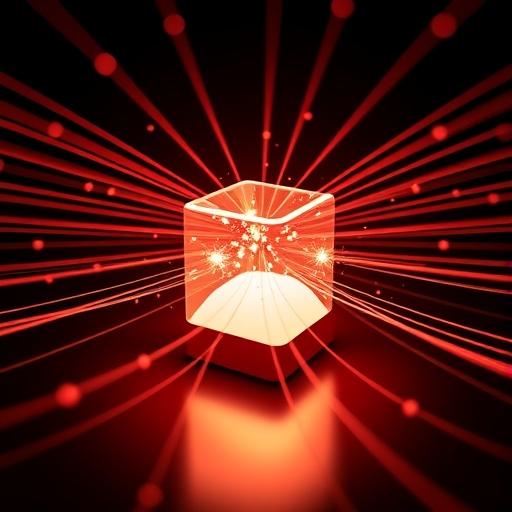In a groundbreaking advancement, researchers at the Korea Institute of Science and Technology (KIST) have successfully created the world’s first ultra-high-resolution distributed quantum sensor network. This innovative approach combines quantum entanglement and distributed sensing to transcend the conventional limits of measurement precision, which has long been constrained by what is known as the “standard quantum limit.” The implications of this achievement extend well beyond theoretical science, positioning quantum sensor technology as a formidable contender in the fields of precision metrology, bioimaging, and astronomical observation.
Metrology, the science of measurement, plays a crucial role in various sectors, ranging from healthcare and semiconductor manufacturing to advanced space exploration. Underpinning these fields is the necessity for precise measurements, which have traditionally been hindered by the limitations of existing sensor technologies. Up to this point, conventional sensors have struggled against the so-called “standard quantum limit,” which caps their performance in terms of precision and resolution. The pioneering work at KIST exemplifies a significant leap forward, showcasing how distributed quantum sensors may offer solutions to these bottlenecks.
The research led by Dr. Hyang-Tag Lim utilized a special quantum state known as the “multi-mode N00N state.” Unlike previous research that primarily employed single-photon entangled states, this new approach integrates multiple photons that are entangled along specific paths. This arrangement permits the generation of dense interference patterns, and the resultant interference fringes significantly enhance measurement resolution. The potential for detecting minute changes in physical conditions places the KIST team’s work at the forefront of quantum sensor technology.
By leveraging the multi-mode N00N state, KIST’s research team has achieved a remarkable feat: an improvement of approximately 88% in measurement precision—a significant increase of 2.74 decibels over traditional measurement methods. This achievement draws the researchers closer to the Heisenberg limit, the theoretical boundary of measurement precision defined by quantum mechanics. Notably, the successful implementation of this multi-photon entangled state not only elevates measurement accuracy but also broadens the spectrum of applications that can benefit from such advancements.
Applications for this quantum sensing technology are vast and varied, spanning several paradigms of science and technology. In the medical field, the ability to achieve high-clarity imaging of subcellular structures can contribute immensely to bioimaging techniques, allowing researchers to visualize intricate details previously hidden from view. Moreover, in semiconductor manufacturing, this technology presents a crucial avenue for detecting defects at nanoscale resolutions, potentially revolutionizing quality assurance measures within the industry.
In the realm of astrophysics, this distributed quantum sensing capability could dramatically enhance our observations of distant astronomical bodies. The precision and clarity afforded by these advanced sensors mean that phenomena previously shrouded in blur could be visualized in exquisite detail. As nations and research institutions increasingly recognize the strategic importance of quantum technology, KIST’s advancements position Korea as a key player on the global stage in the realm of quantum sensors.
The feasibility of scaling this technology to commercial applications is another exciting prospect. The integration of this quantum sensor technology with emerging silicon-photonics-based quantum chip technology could open doors for widespread usage across daily life. This suggests that the far-reaching potential of quantum sensors may soon transition from laboratory research to real-world applications, impacting fields from healthcare to telecommunications.
For scientists and researchers alike, the work of the KIST team marks a transformative moment in quantum technology. This convergence of precision measurement and sensitive detection highlights the role of quantum mechanics in shaping future scientific endeavors. Furthermore, the implications of this work extend beyond immediate applications, as they invite additional inquiry into the behavior of entangled states, quantum coherence, and the fundamentals of measurement.
As the field of quantum sensing continues to evolve, other research groups worldwide will likely seek to replicate or build upon the principles established by KIST. This kind of competition fosters innovation, driving the field forward and pushing the boundaries of what is scientifically feasible. As the impacts of quantum technology ripple throughout science and industry, the potential for collaboration and cross-disciplinary research becomes ever clearer.
In conclusion, the advancements made by Dr. Hyang-Tag Lim and his team at KIST not only signify a milestone for quantum sensor networks but also herald a future teeming with possibilities. Their achievements serve as a reminder of the power of scientific exploration and technological advancement, illustrating just how far we have come—and how far we can still go—in our quest to understand and manipulate the quantum world. Quantum sensors stand poised to redefine precision measurement, offering extraordinary capabilities that promise to transform a multitude of industries and scientific fields.
The KIST research is a compelling case study of how dedicated scientific inquiry can lead to breakthroughs that significantly influence both theoretical understanding and practical application. As further studies and experiments unfold, the potential for quantum technology to unlock new realms of knowledge and application continues to expand. In a world increasingly reliant on precise measurements and data, the impact of this research is poised to grow, making the developments at KIST a vital chapter in the ongoing narrative of quantum science.
Subject of Research: Distributed Quantum Sensor Networks
Article Title: Distributed Quantum Sensing with Multi-Mode N00N States
News Publication Date: 1-Aug-2025
Web References: Physical Review Letters
References: Physical Review Letters, Ministry of Science and ICT (Korea)
Image Credits: Korea Institute of Science and Technology (KIST)
Keywords
Quantum sensors, distributed quantum sensing, multi-mode N00N states, Heisenberg limit, precision metrology, bioimaging, semiconductor diagnostics, super-resolution imaging, quantum entanglement.




